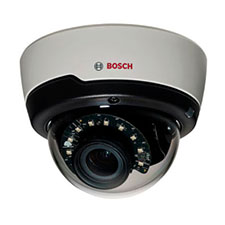
Stay Competitive by Offering Cutting-Edge Commercial Security Solutions to Your Customers
Steve Maurer, IME
Got a notification on my doorbell cam app yesterday. Seems that some rebel was going through a nearby neighborhood, smashing doorbell cams with a pick axe.
A pick axe. Doorbell cams. Smashing.
The police caught him. The doorbell cam did its job.
Idiot’s action was stored in the cloud and shared.
Sheesh!
I’ve got doorbell cams, too. And outdoor wall lights with cameras. A total of seven cameras in all, to be exact.
An app on my phone, that also ties in to my faithful Echo Show, lets me monitor our premises from anywhere. We got them mostly for Mary’s seamstress business so she could see customers coming to the door.
But the app also alerts us to goings on around the neighborhood.
And… cat videos.
But commercial security systems are a whole other story.
Let’s take a look at their components.
Residential systems are pretty simple. A camera, motion-sensing lights, and maybe a microphone. Oh… and an app so you watch while you’re away from home. And if you pay a subscription, the recordings can be uploaded to the cloud and even distributed to the local constabulary.
But commercial systems are more robust and can have a lot more moving parts (or non-moving parts, too). With good reason.
Commercial security systems are designed to protect businesses and commercial properties effectively. The key features of a professional security system include:
- Security Cameras: High-resolution cameras strategically placed indoors and outdoors provide clear surveillance footage, even in low-light conditions. Wide-angle lenses helps minimize blind spots, and advanced video analytics detect suspicious activities like motion tracking and even facial recognition.
Infrared helps with the low light at night, and some can even pivot automatically to track movement. - Access Control Systems: These systems regulate and restrict unauthorized entry to business premises through key fobs, ANPR (Automatic Number Plate Recognition), or biometric access. They provide secure and traceable entry for authorized personnel, integrate with visitor management systems, offer customizable access levels, and enhance security with time-based access and real-time monitoring.
- Intruder Detection Systems: Crucial for detecting and preventing unauthorized entry, these systems include sensors and detectors that trigger alarms and alert notifications when unauthorized access is detected. They help deter thieves, vandals, and criminals, with modern features like wireless connectivity for easier installation and scalability.
You want to see real intruder detection systems, visit any military or government facility. Think… Area 51, LOL. - Remote Monitoring and Management: Essential for efficient security operations, remote monitoring allows security personnel to monitor and manage the system from anywhere. It enables quick response times, real-time alerts, cloud-based storage for easy access to video footage, encrypted data transmission, secure user authentication, integration with smart devices, and IoT technology for an enhanced security ecosystem.
This is way more advanced than the video surveillance system at your old local gas station. Remember those police shows where the detective asked for the videotape of the alleged intruder? How quaint. And so retro.
I set up a lot of keypad entries in my day, which limited access to those who know the code (although it’s not fool-proof). And in the plant I worked as an electrician in, card readers were also employed to keep up unauthorized entrants.
Today’s surveillance systems are more advanced than ever before. Security and law enforcement no longer have to run to the scene of the incident to monitor or review the video tapes. It’s all in the cloud… and not the white fluffy kind.
Monitoring can be done virtually anywhere in the country… or the world for that matter. A more centralized monitoring system allow various facilities in a company’s network to be viewed 24/7 from a main security system or even, you guessed it, an app.
Monitoring is often done by an in-house team.
But just as often, and potentially more so, surveillance is carried out by a professional security service, trained in what to do when an incident occurs.
Professional security systems… Definitely not for DIYers.
In most jurisdictions, installing professional, commercial security systems require special licenses and/or permits. And often special education or training.
- Alarm Permit: Many local governments require an alarm permit for commercial security systems, especially if they involve remote monitoring or emergency response features.
- Fire Alarm System License: In New York State, a security and fire alarm installer license is required for installing closed-circuit television systems (CCTV), video surveillance systems, and electrical entry systems that detect intrusion, break-in, theft, movement, sound, or fire.
- Qualifying Education: Individuals seeking a Security or Fire Alarm Installer license may need to complete at least 81 hours of qualifying education, pass an alarm installer examination, and meet other requirements set by the licensing authority.
- Fees and Registration: Obtaining an alarm permit typically involves paying a permit fee ranging from $25 to $100. The permit registers the alarm with local emergency services, assigns a unique number to the property, and may require placing identifying stickers on windows and doors for quick identification by first responders.
So, it’s not enough to just hang out your shingle, promoting yourself as a security system installer.
Installers and the businesses they serve must research the laws, regulations, and requirements before planning and implementing a security system.
But for the professional electrician, it can be a profitable venture.
Well, gotta go! Just got a notification that somebody’s brown Lab is wandering around loose.
Photo courtesy of Bosch Security Products



